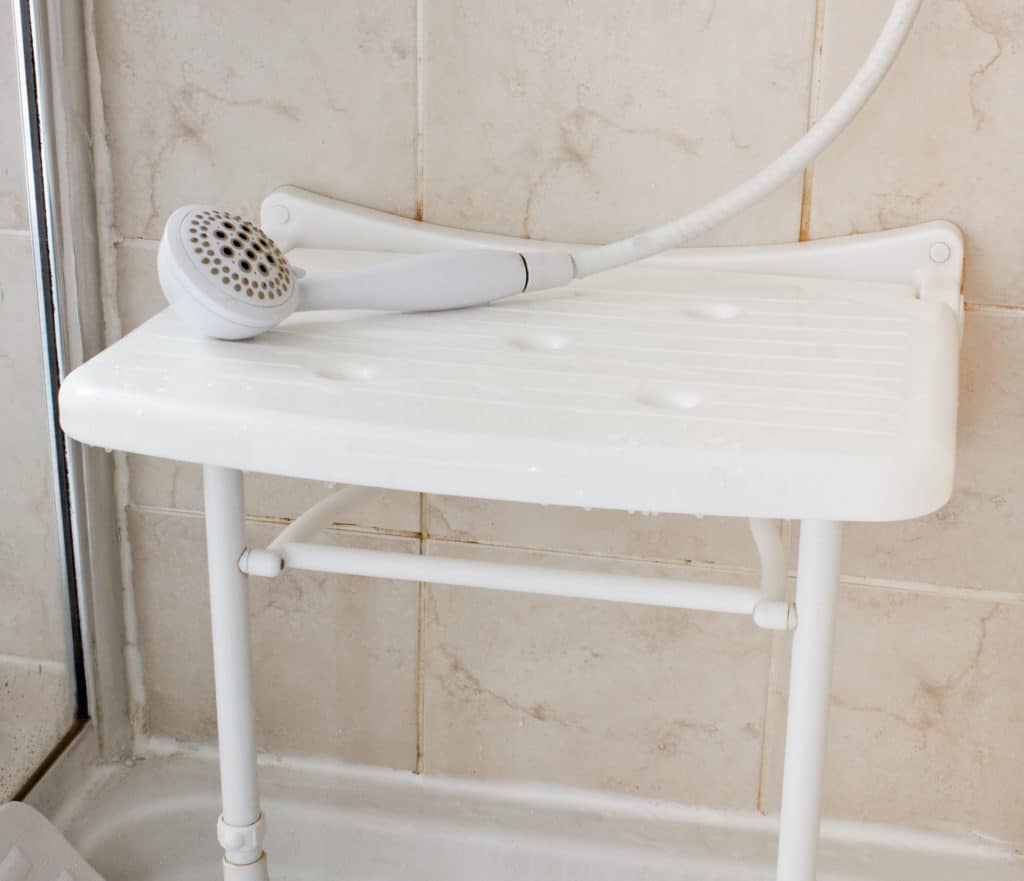Henry Hoffman
Thursday, May 11th, 2017
Last modified on September 16th, 2022

It’s not pleasant to feel dirty or grungy, but after a stroke it can be such a challenge to maintain personal hygiene that you may not be as meticulous about it as you once were.
When you have limited mobility, hemiplegia or hemiparesis, or are suffering from spasticity, tasks that seemed simple before your stroke have become exhausting. When it comes to washing up, it can really seem like a chore. Getting in and out of the bathtub, washing your body, drying yourself, and even walking around a slippery bathroom floor are struggles.
Although it’s taxing, keeping up personal hygiene after a stroke is important. It’s more than a routine. Bathing helps you maintain good health and can improve self-confidence and emotional well-being. While it might take some practice and a few adaptive tools, learning how to safely bathe yourself after a stroke is not only possible but necessary.
After your stroke, your therapist will teach you skills to help you bathe independently before you move back home. Below are tips that may help.
Contrary to what you might assume, showers are safer than bathtubs. Getting in and out of a bathtub is more difficult than getting in and out of a shower, and you are more likely to slip and fall in the former. If you must use a bathtub, install a bath transfer bench to make getting in and out easier.
Just because you’re taking a shower doesn’t mean you have to stand up the whole time. Put a non-skid and waterproof chair in your shower so you can sit down while you clean up.
Before you get in the shower, double check that you have all the supplies you need, including washcloths, soap, shampoo and conditioner, a towel, bathrobe, and anything else you use to clean up. The last thing you want is to have to leave the shower and walk across the room on a slippery floor to get something you forgot.
Don’t sit underneath the water before you turn it on and adjust the temperature. Give the shower a minute or two to heat up, and then test it with the inside of your wrist to see if it is too hot or cold.
Bar soap is easy to lose your grip on and drop. Instead, use liquid soap in a squeeze or pump bottle. If you really want to stick with the bar soap, you can place it in a nylon stocking and tie it to the shower grab bar so it doesn’t fall or slide away.
When you’re first getting started with bathing yourself, consider asking a trusted friend or loved one to assist you. Even when you’re feeling confident in your personal hygiene skills, keep a phone or a medical alert device in reach just in case something happens and you find yourself in need of help.


A wet and soapy shower floor is a slipping hazard for anyone, and it becomes even more dangerous when you have limited mobility. Non-slip bath safety strips are perfect for adding traction to a bath or shower floor.

Shower grab rails provide extra support when transferring yourself in and out of the shower or sitting in or rising from your shower chair. Grab rails can be purchased at local hardware stores, but should be installed by a professional to ensure that they are sturdy and placed properly. Consult your therapist about what type of grab rails will be most helpful to you.

Don’t steal a chair from your kitchen table. After your stroke invest in a safe, waterproof shower chair with rubber feet to grip the floor of the shower that has handholds to make raising and lowering yourself out of it easier.

After a stroke, reaching behind your back or legs is tough. A long-handled brush with a sponge or scrubber at the end lets you easily clean hard-to-reach areas of your body without straining yourself.

A handheld shower head makes it easy to rinse tough-to-reach parts of your body like armpits and private areas. You can also buy a handheld showerhead with adjustable height so you can reach it while you’re sitting.

Walking across a slippery bathroom floor with wet feet is a recipe for disaster. After getting out of the shower, slip on a pair of socks or slippers with non-skid soles. Then you can go about the rest of your bathing routine without worrying about slipping.
Recovering from a stroke does not mean you have to stop taking care of yourself. Keeping up personal hygiene is a great way to stay healthy physically and emotionally. After all, there’s nothing like cleaning up to look and feel your best. It’s something you can take pride in, too. As long as you keep safety in mind and outfit your shower with some adaptive equipment, you can get back to bathing regularly.
All content provided on this blog is for informational purposes only and is not intended to be a substitute for professional medical advice, diagnosis, or treatment. Always seek the advice of your physician or other qualified health provider with any questions you may have regarding a medical condition. If you think you may have a medical emergency, call your doctor or 911 immediately. Reliance on any information provided by the Saebo website is solely at your own risk.